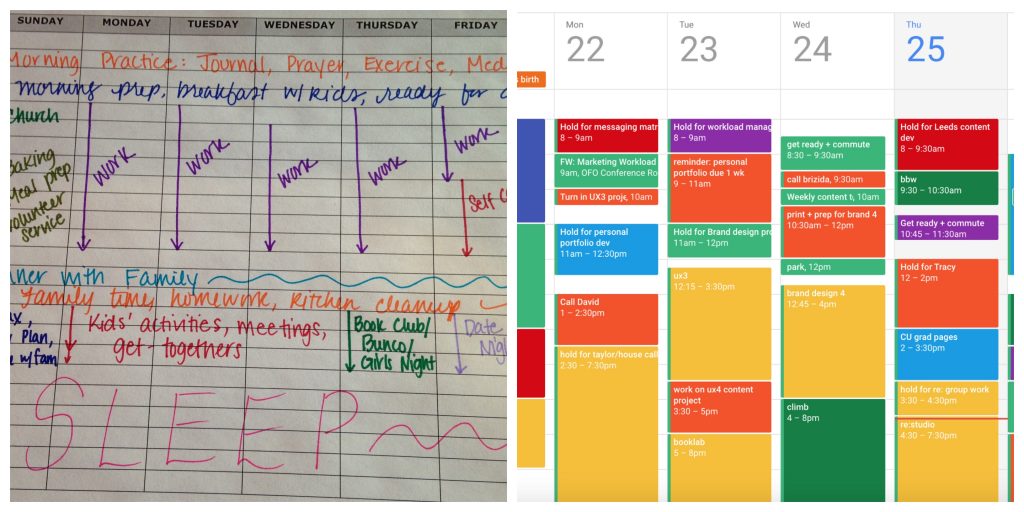Time management; the What, Why and How of using blocks.
How much free time do you have? None? Almost none? And yet, if the washing machine broke and you had to call an expert, or if you had to take your Mum to hospital, you would find the time to do it anyway, right?
This is because time is flexible and elastic.
Most people who claim to be highly productive, are also highly organised.
What’s more, there have been many companies in Europe that have put this theory into practise, by changing to a 4-day work week, with positive results for productivity! But if the company you work for doesn’t follow this practice there’s still something you can do.
Let’s have a look at how you can organize your life using blocks.

What are time blocks?
Time blocks are designated times set to completing a certain task. Time blocking is the art of using these blocks effectively. A time block may be short or long, specific or general, and professional or social. You may already do some form of time blocking without having considered it before!
Why blocks?
Perhaps you have tried some organization methods in the past – like writing lists or filling calenders. Using time blocks is similar, but more flexible, and, hopefully, more destined to succeed. Best of all, the blocks can be shuffled around as you need them to be. Used correctly, time blocks can liberate you from procrastination, and help you to spend your time how you really want to.
How?
Just as we discussed last week, it takes about a month to create a habit. If you have anything that you want to do every day, you can use this as your first block. For example, if you want to do a 15-minute yoga routine before work every day, you can make this the first block, from Monday to Friday.
Professional blocks
One of the greatest advantages of time blocking is being able to make the most of your working time. Whereas you might have more general blocks at other times during the day, at work, it can be a good idea to be more specific. In fact, it can be a great idea to start the morning with one 5 minutes block of block planning. This way, you can prioritise what really needs to be done, and give yourself sufficient time to complete the most important tasks. This way, you can also realise how much time you really think you need to complete the day’s tasks.
Following blocks
Your blocks are there to serve you, not restrict you, so they can be adapted as time passes. As you have all of your blocks in your (probably digital) calendar in front of you, you can decide which block you will steal half an hour from.
You can choose less demanding tasks for a time of the day that you know you aren’t normally as productive (for me, straight after lunch!). Perhaps you can make a block of mini-tasks, each of which you don’t know how long it will last.
12:30 – 13:30 Lunch with Alice
13:30 – 15:00 Tasks :
– Call finance department
– E-mail client list B
– Draft introduction letter….
Time out
If you are lucky enough to be able to forget all about work as soon as you leave the office, then perhaps you would prefer to leave the blocks at work too, however, you might find that you can even make the most of your me time if it is slightly organised as well! This might mean, for example, that you put in half an our of something you know that you want to do, but don’t make yourself do, like learning something, or just reading a book. You can even make a 4-hour evening block of “doing whatever I want!
Do you think time blocking could work for you? Have you tried it, or something similar? How do you make the most of your time? Let us know in the comments section below.
Podcast: Play in new window | Download



2 Responses
[…] couple of weeks we’ve talked about how to start a new habit and how to manage your time using timeblocks. But why do you want to manage your time better? What are you aiming for? If you study a language […]
[…] some small habits that can help you to improve your English without much effort. We have looked at time-blocking, setting mini-goals, and how to teach yourself using […]